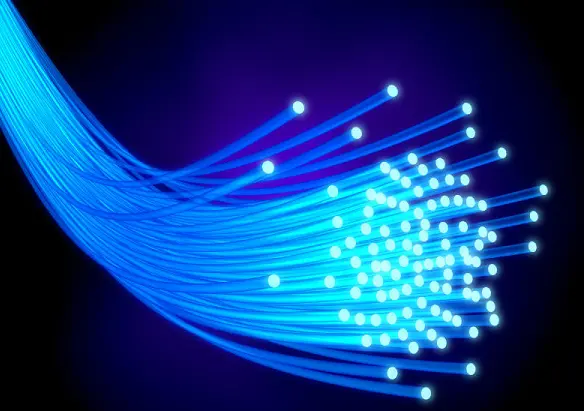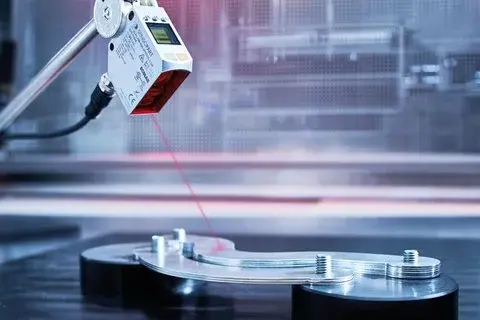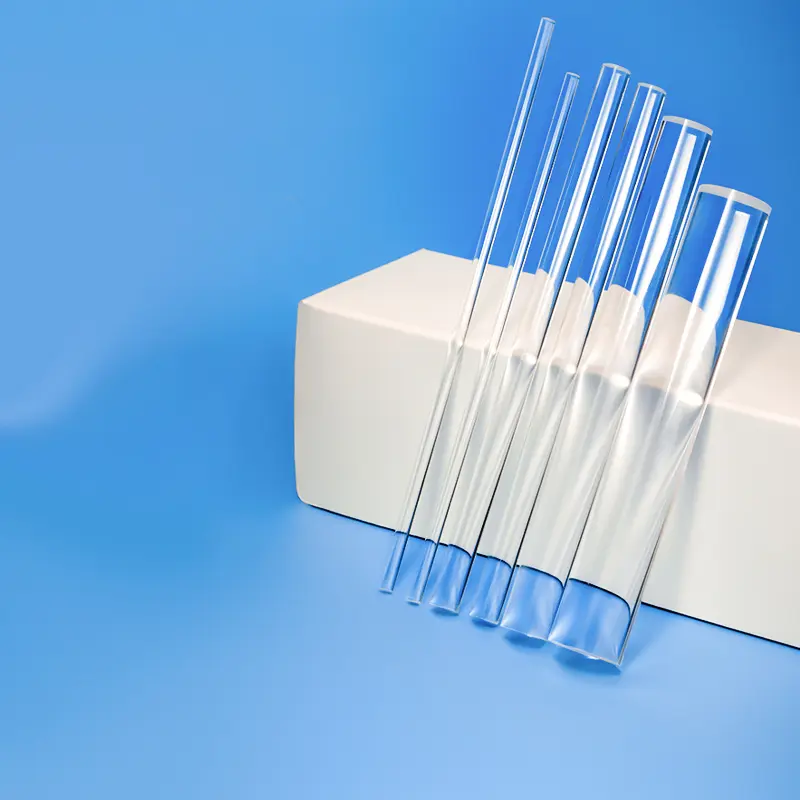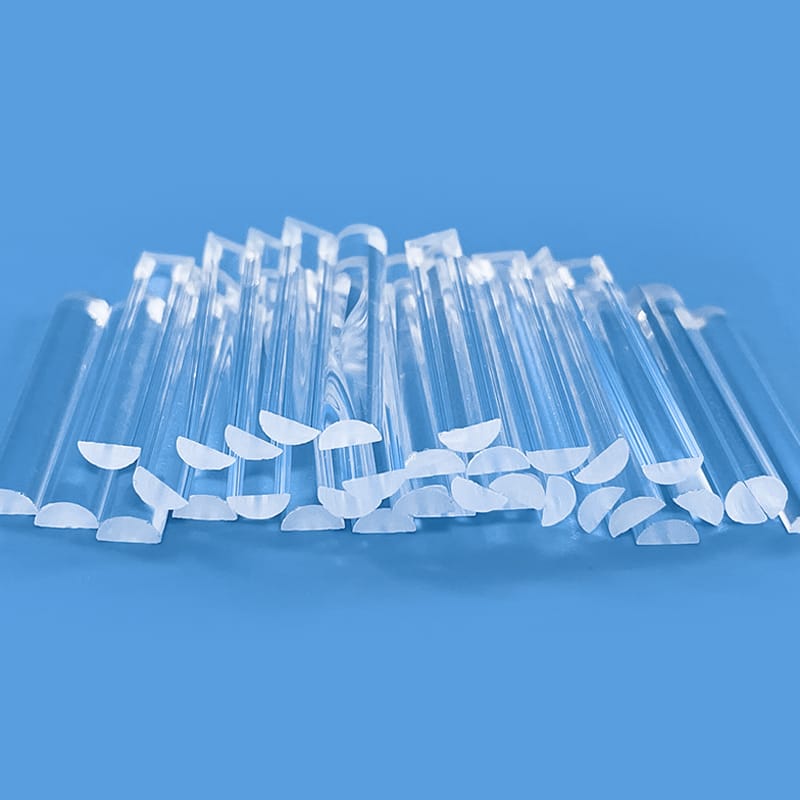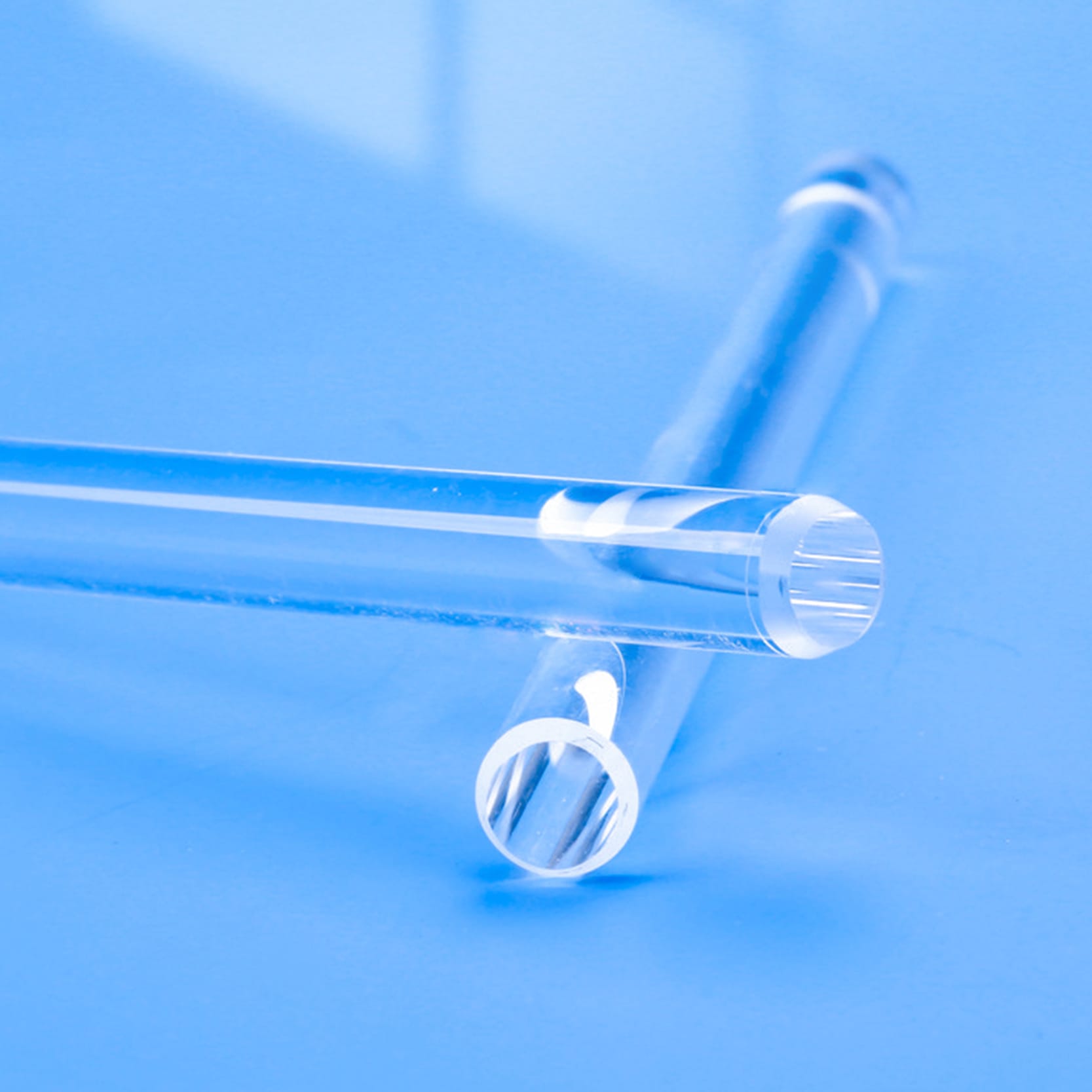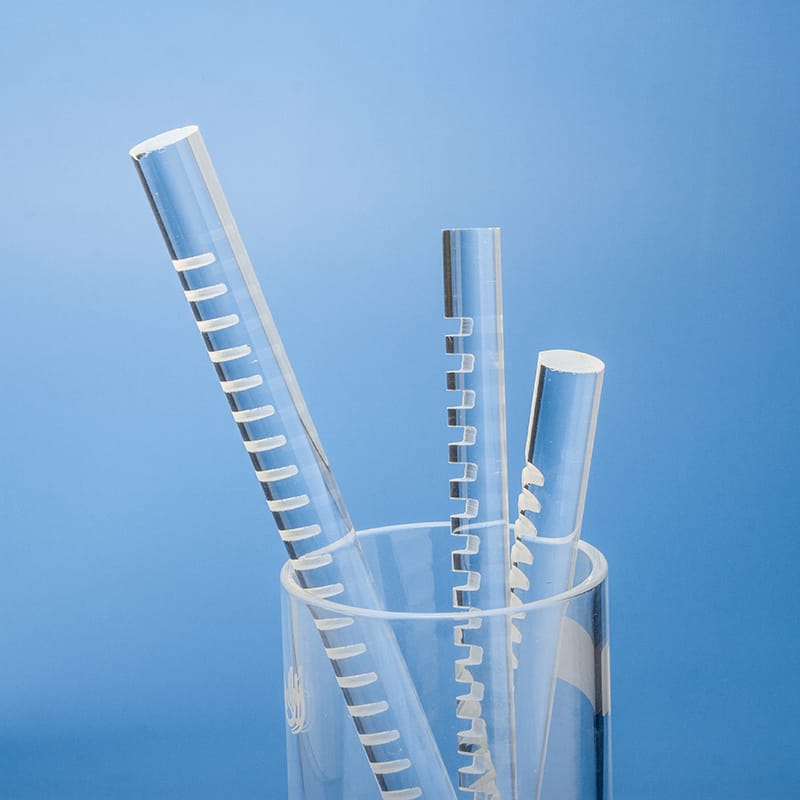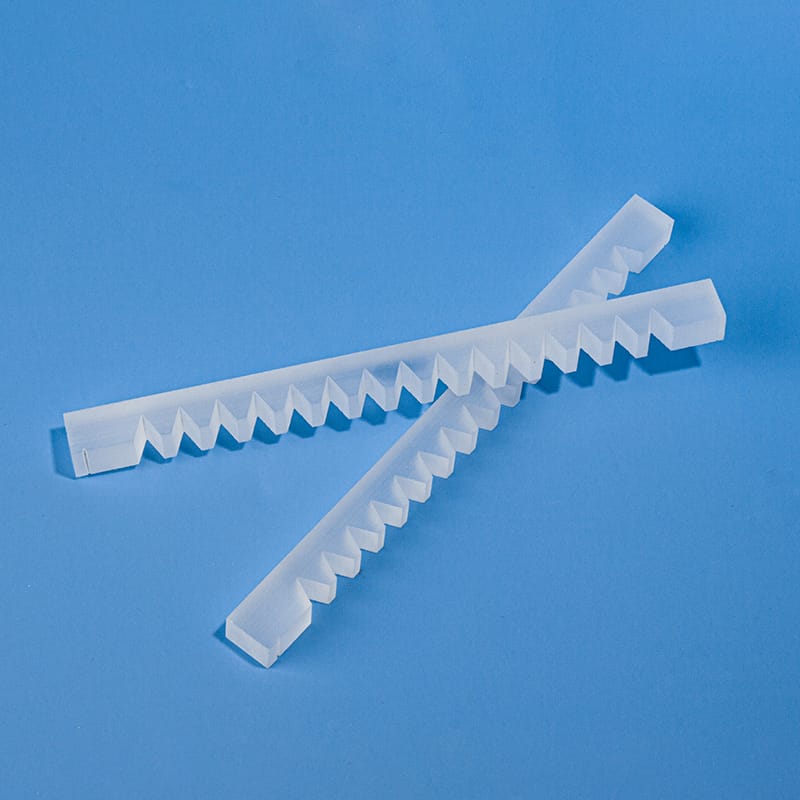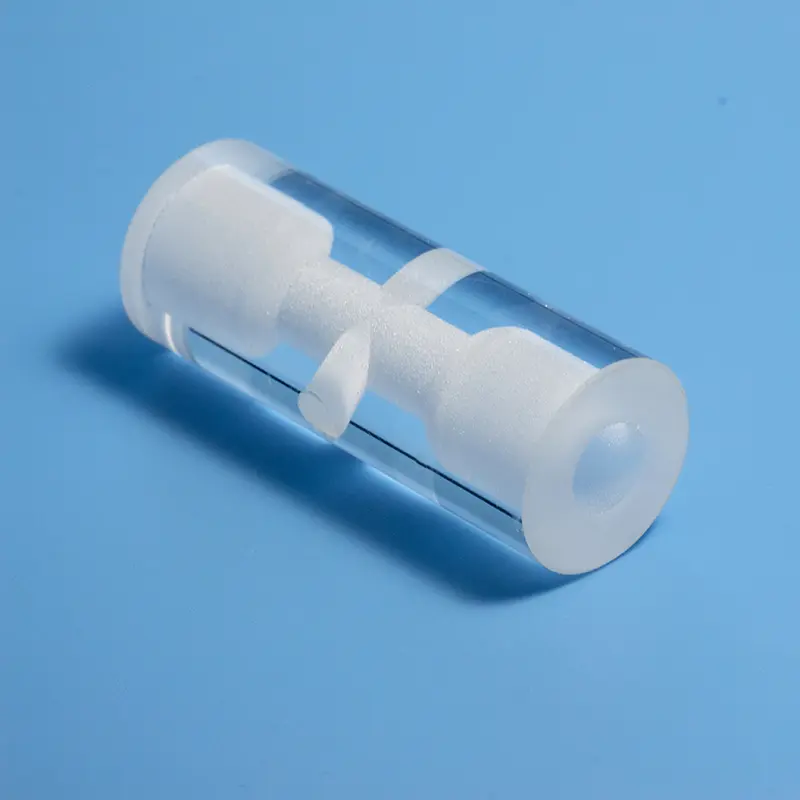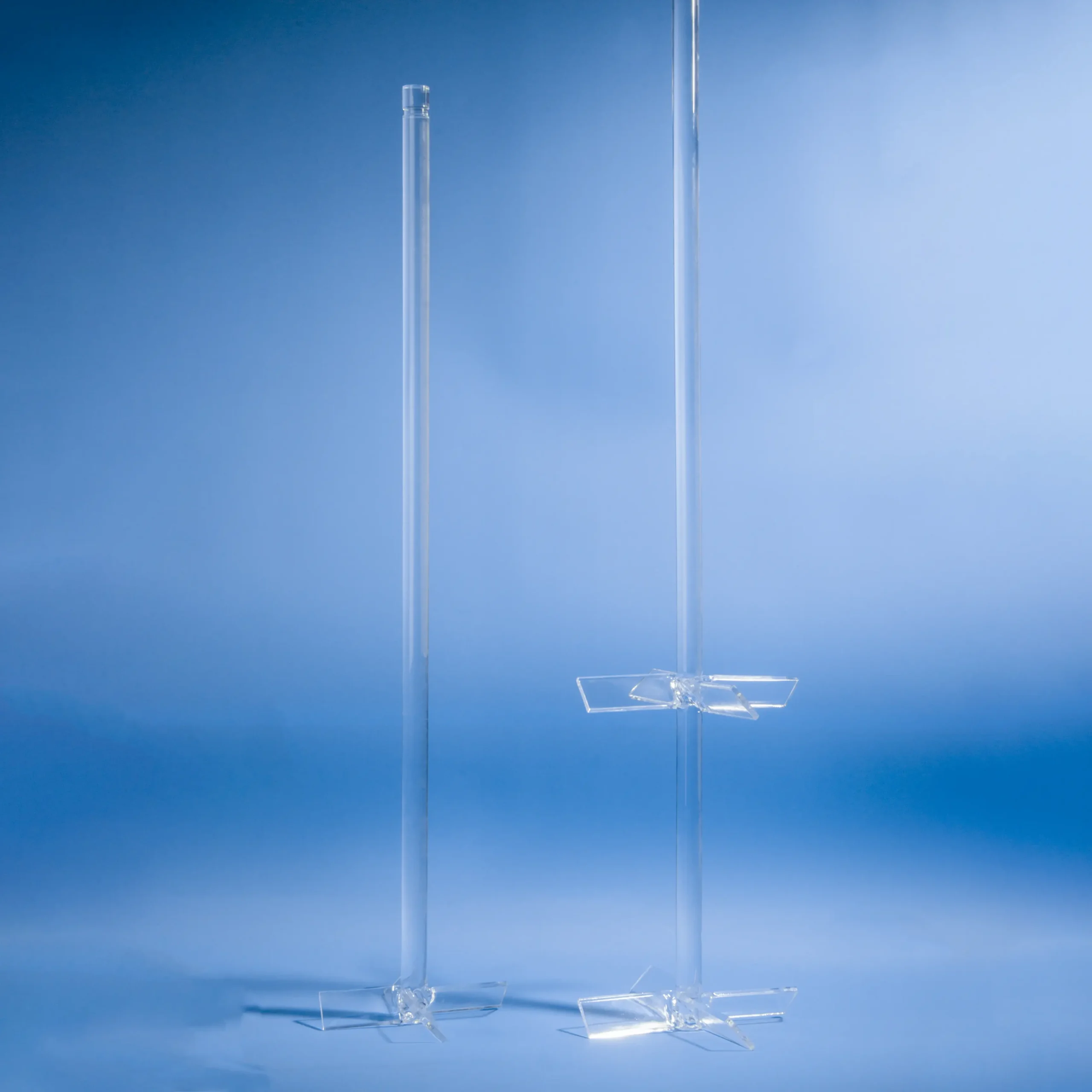Unsere Präzisions-Quarz-Winkel-Lichtleiterstäbe verfügen über eine 45-Grad-Oberfläche für effiziente Lichtübertragung und -umlenkung. Hergestellt aus hochreinem Quarzglas bieten diese Komponenten eine außergewöhnliche UV-Transmission, thermische Stabilität und chemische Beständigkeit. Sie sind ideal für optische, analytische und medizinische Systeme, die eine präzise Lichtführung erfordern. Kundenspezifische Winkel und Abmessungen sind verfügbar, um Ihre spezifischen Designanforderungen zu erfüllen
| Durchmesser | Länge |
|---|---|
| 10mm | 300mm |
| 10mm | 600mm |
| 12mm | 300mm |
| 12mm | 600mm |
| 14mm | 300mm |
| 14mm | 600mm |
| 15mm | 300mm |
| 15mm | 600mm |
| 15mm | 1000mm |
| 16mm | 300mm |
| 16mm | 600mm |
| 16mm | 1000mm |
| 16mm | 1200mm |
| 18mm | 300mm |
| 18mm | 600mm |
| 18mm | 1000mm |
| 18mm | 1200mm |
| 20mm | 300mm |
| 20mm | 600mm |
| 20mm | 1000mm |
| 20mm | 1200mm |
| 22mm | 300mm |
| 22mm | 600mm |
| 22mm | 1000mm |
| 22mm | 1200mm |
| 25mm | 300mm |
| 25mm | 600mm |
| 25mm | 1000mm |
| 25mm | 1200mm |
| 28mm | 300mm |
| 28mm | 600mm |
| 28mm | 1000mm |
| 28mm | 1200mm |
| 30mm | 300mm |
| 30mm | 600mm |
| 30mm | 1000mm |
| 30mm | 1200mm |
| 32mm | 300mm |
| 32mm | 600mm |
| 32mm | 1000mm |
| 32mm | 1200mm |
| 35mm | 300mm |
| 35mm | 600mm |
| 35mm | 1000mm |
| 35mm | 1200mm |
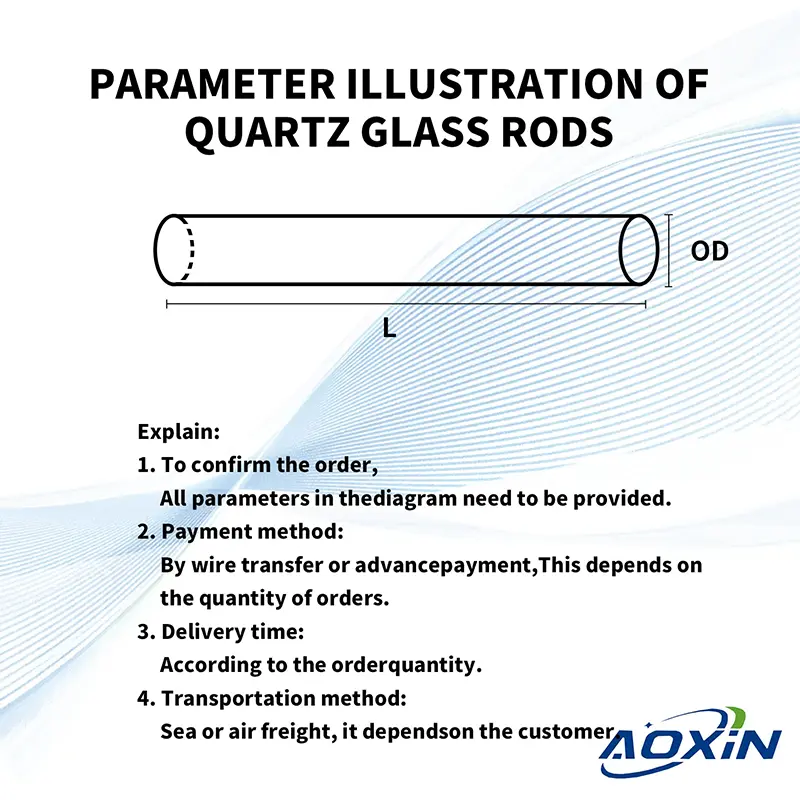
Anmerkungen:
注文を確認するために
Folgende Parameter sind erforderlich:
① Außendurchmesser ② Länge ③ Menge
- Zahlungsmethode:
Per Überweisung oder Vorauszahlung
Es hängt von der Bestellmenge ab. - Delivery time:
According to the order quantity. - Versandmethode:
Per See oder Luft
Es hängt vom Kunden ab.
| Eigenschaftsinhalt | Eigenschaftswerte |
|---|---|
| SiO2 | 99.99% |
| Dichte | 2,2×10³ kg/cm³ |
| Härte | Mohs-Härte 5,5 - 6,5; Knoop-Härte 570 (bei 100 g Prüflast) |
| Zugfestigkeit | 4,8 × 10⁷ Pa (48 N/mm² bzw. 48 MPa); 7.000 psi |
| Druckfestigkeit | >1.1×10⁹ Pa (160,000 psi) |
| Wärmeausdehnungskoeffizient | 5.5×10⁻⁷ cm/cm·°C (20°C-320°C) |
| Wärmeleitfähigkeit | 1,4 W/m-°C |
| Spezifische Wärme | 670 J/kg-°C |
| Erweichungspunkt | 1730°C (3146°F) |
| Transformationspunkt | 1210°C (2210°F) |
| Spannungspunkt | 1120°C (2048°F) |
| Arbeitstemperatur | 1200°C (2192°F) |
| Elektrischer Widerstand | 7×10⁷ Ohm cm (350°C) |
| Größe | Kundenspezifisch |
| Logo | Personalisierung mit Logo |
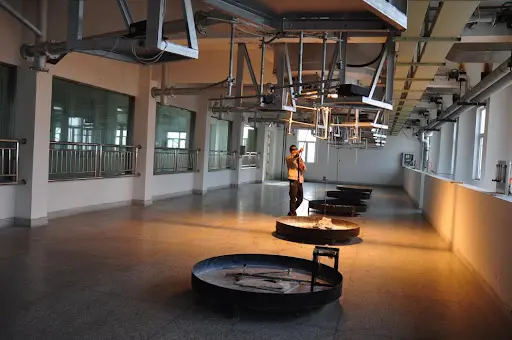
Es gibt zwei Hauptmethoden zur Herstellung von Quarzstäben: das kontinuierliche Verfahren und das Flammenfusionsverfahren (auch bekannt als Gasfusionsverfahren).
Kontinuierliches Verfahren: In dieser Methode wird Quarzsand von oben in einen Ofen eingespeist, der aus einem metallischen Quarz-Krug besteht, der von elektrischen Heizelementen umgeben ist. Der Quarzsand schmilzt bei hohen Temperaturen. Das geschmolzene Material passiert dann eine Formöffnung am Boden des Krugs, wodurch Stäbe, Rohre, Platten oder andere spezifizierte Produktformen erzeugt werden.
Flammenfusionsmethode: Dieses Verfahren beinhaltet die Verwendung von Wasserstoff und Sauerstoff, um farblosen Quarzkristall zu schmelzen. Das geschmolzene Material wird durch das Schmelzen und Erstarren von Kristallpartikeln in der Flamme zu Quarzglas geformt. Das Quarzglas wird dann auf verschiedene Weisen aus der Flamme entfernt und zu Quarzstäben der gewünschten Form verarbeitet.
Design mit 45-Grad-Winkel
Dieser Lichtleiterstab wird mit einem speziellen Schneide- oder Formprozess hergestellt, um eine 45-Grad-Schräge zu erzeugen. Dieses Design erleichtert die spezifische gerichtete Lichtübertragung oder -umlenkung, um den Anforderungen bestimmter optischer Systeme gerecht zu werden.
Hohe Lichtdurchlässigkeit
Hergestellt aus hochreinem Quarzmaterial zeigt dieser Lichtleiterstab eine hervorragende Lichtübertragung, die einen hohen Durchsatz von Lichtsignalen während der Übertragung gewährleistet und den Lichtverlust minimiert.
Hochtemperatur- und Korrosionsbeständigkeit
Das Quarzmaterial bietet außergewöhnliche Beständigkeit gegen hohe Temperaturen und Korrosion, sodass der Lichtleitstabs auch unter extremen Umweltbedingungen eine stabile Leistung aufrechterhalten kann.
Hochpräzisionsbearbeitung
Um die Genauigkeit und die Oberfläche des 45-Grad-Winkels zu gewährleisten, durchläuft dieser Lichtleitstab Präzisionsbearbeitungs- und Polierprozesse und erfüllt die hochpräzisen optischen Anforderungen.
Anwendungsszenario
Medizintechnik
Im Bereich der Medizintechnik werden 45-Grad-winklige Quarz-Lichtleitstäbe umfassend in laserchirurgischen Instrumenten und optischen Mikroskopen eingesetzt. Sie gewährleisten eine präzise Übertragung und Bildgebung von Lichtsignalen, was die Leistung und Genauigkeit von medizinischen Geräten verbessert.
Wissenschaftliche Forschung
In der wissenschaftlichen Forschung verwenden Forscher 45-Grad-Winkel-Quarzlichtleiterstangen, um verschiedene optische Experimentiersysteme zur Untersuchung optischer Phänomene und der Eigenschaften optischer Materialien zu konstruieren. Die hohe Präzision und Stabilität dieser Lichtleiterstangen gewährleisten zuverlässigere und genauere Versuchsergebnisse.
Häufig gestellte Fragen
Wir sind auf die durchgängige Fertigung von hochreinen Quarzglaskomponenten spezialisiert. Unsere Kernproduktlinien umfassen:
Quarzrohre & -stäbe: Eine große Auswahl an Durchmessern und Spezifikationen.
Quarzplatten & -scheiben: Präzisionsgeschnitten und poliert für optische und industrielle Anwendungen.
Quarzlaborglas: Ein komplettes Sortiment an Standard- und kundenspezifischen Glasgeräten, einschließlich Bechergläsern, Kolben und Booten.
Halbleiterquarz: Hochreine Komponenten wie Prozessrohre und Träger für die Halbleiterfertigung.
Kundenspezifische Fertigungskomponenten: Wir können komplexe Teile nach Ihren einzigartigen Designs und Spezifikationen fertigen.
Ja. Kundenspezifische Fertigung ist das Herzstück unseres Geschäfts. Mit über einem Jahrzehnt spezialisierter Erfahrung arbeiten wir eng mit Unternehmen zusammen, um erstklassige OEM/ODM-Dienstleistungen anzubieten. Unsere Kompetenzen umfassen Schweißen, Schleifen, Bohren, Polieren, Biegen und weitere Präzisionsbearbeitungstechniken, um Komponenten zu fertigen, die exakt Ihren Anforderungen entsprechen.
Qualität ist in unserem Herstellungsprozess von größter Bedeutung. Wir sind ein ISO 9001:2015 zertifizierter Hersteller, der sicherstellt, dass unsere Prozesse internationale Qualitätsmanagementstandards erfüllen.Unsere Produkte durchlaufen zudem rigorose SGS-Prüfungen hinsichtlich Reinheit und Leistung. Wir verwenden hochreine Rohmaterialien (bis zu 99,998% SiO2), um Quarzglas- und Kieselglasprodukte mit außergewöhnlicher thermischer Stabilität, hoher Temperaturbeständigkeit und chemischer Inertheit herzustellen.
Wir haben unsere Prozesse maximal effizient gestaltet:
Senden Sie Ihre Angebotsanfrage (RFQ): Senden Sie uns Ihre technischen Zeichnungen, Spezifikationen und Anforderungen über unser Kontaktformular auf der Website oder per E-Mail.
Schnelle Reaktion: Sie können eine erste Antwort innerhalb weniger Minuten und eine detaillierte Kommunikation innerhalb einer halben Stunde erwarten.
Design & Angebot: Wir liefern Ihnen innerhalb von 24 Stunden einen detaillierten Designvorschlag und ein wettbewerbsfähiges Angebot.
Prototypenentwicklung & Produktion: Nach Freigabe gehen wir zügig von der Prototypenfertigung zur Serienproduktion über, um Ihre Fristen einzuhalten.
Eine Partnerschaft mit Aoxin Quartz bietet mehrere entscheidende Vorteile:
Nachgewiesene Expertise: Mit über 10 Jahren Branchenerfahrung verfügen wir über das technische Fachwissen, um komplexe Herausforderungen zu meistern.
One-Stop Solution: We manage the entire production process, from sourcing high-purity raw materials to fabricating and finishing complex components.
Wettbewerbsfähiger Wert: Als Standort in einem wichtigen Quarzproduktionszentrum nutzen wir eine effiziente Lieferkette und fortschrittliche Fertigung, um außergewöhnliche Qualität zu einem wettbewerbsfähigen Preis anzubieten.
Dedicated Partnership: Over 90% of our clients become long-term partners. We are committed to your success through responsive service, reliable quality, and innovative solutions.


